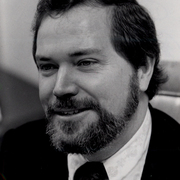# 28 Mad Men At The Peace Corps: Bob Gale (Washington, D.C.)
Regardless of what else might be said about the “Gale Method” it established two important elements for the Peace Corps. HQ staff now understood how recruitment was done, and had acquired the skills that would make them effective recruiters. More importantly was that within the first years, the Peace Corps was established as part of campus life. Peace Corps Recruiters would be invited back every year, and would be welcomed, often with the same deference and cooperation shown in 1963.
By now, and this was early in 1965, the Peace Corps was starting the “In, Up & Out” policy that Robert Textor had crafted in a memo for the agency, and Bob Gale was thinking of leaving. He didn’t want to be Director of Recruiting for Life, as Shriver had declared at the senior staff meeting in March 1963.
Gale wanted to leave when the going was good. In the academic year 1963-64, his recruiting techniques had bought in thirty-six thousand applications. During the 1964-65 season, his formula attracted forty-six thousand.
“I really wanted to quit while I was winning,” he says. “To have gone stale at the Peace Corps would have been a sad thing.”
The end came for him in the snows of March in Bloomington, Indiana on a trip with Shriver.
It was a classic “Shriver way” to end a career at the Peace Corps.
Shriver was giving a speech to two thousand students on campus in the college auditorium.
“Sarge was doing his Pied Piper number,” Gale recalls. “His stem-winder speech, quoting from Thomas Aquinas and Thomas Jefferson and the Greek philosophers and the Bible and JFK’s inaugural speech. The kids were going wild.
“We were, as usual, running late and had a plane to catch. The students were following him as he left the auditorium; they were asking for his autograph, wanting to shake his hands. Mobs of them.
“I got Shriver into the car and we took off for the airport in a blizzard of snow. I had no idea whether we would make the plane, but now Sarge wanted me to go, go! Frazzled I missed the turnoff on the highway. We can’t get up onto the cloverleaf. I didn’t know how or where to double back, out there in the middle of all this farmland.
“Sarge says, ‘go that way!’
“But that’s the opposite exit ramp, Sarge. We can’t.”
“Sure you can. Sure you can. Blink your lights! Honk your horn! Keep honking!’
“So, we head up the exit ramp the wrong way at sixty miles an hour in the blinding snowstorm and Sarge is cheering me on, just as excited as hell. Lights blinking. Horn hooking. Total madness. And I make an insane, suicidal U-turn at the top of the ramp, and we’re off in the right direction. We make the plane!
“To Sarge, making the plane was simply the happy ending to a series of delightful episodes. To me, it was simple The End.”
It was Over. It was time for Bob Gale to leave the Peace Corps and his legacy, The Wisconsin Plan. Blitz Recruiting. Like everyone else who served in the agency in those early years, he was: In, Up & Out! of the Peace Corps. The greatest job he’d ever loved!

I was at PC headquarters in ’63 and ’64, and remember those recruiting blitz’. Everyone in the agency was assigned to one or two schools, and sent out on the road for a week or more. It wasn’t voluntary. Moyers, Wiggins and other big shots got the choice schools, like Harvard, Yale and Stanford. The rest of us were assigned to campuses based on our rank in the food chain. I got Northern New Jersey Teachers’ College. A year later, with a little more seniority, I was assigned to Georgia Tech and Emory. It was an exciting experience for this 23 year-old, filled with intense discussions with students, SNCC organizers and other activists. We were treated like rock star on the campuses, and invited to speak to classrooms and clubs. Especially in the smaller towns, we were considered celebrities, and interviewed on local TV and invited to dinner by faculty and alumni. Until John posted this article, I hadn’t realized how unique or successful this recruiting technique was. As I recall, Gale sold the idea because the initial wave of enthusiastic applicants began to subside, and something big was needed to meet the Peace Corps’ surging goals. David Raphael, PDO/Africa
David, small point – There never was a school called Northern New Jersey Teachers College. In those years there were three such colleges in the northern part of the State. There was Jersey City State Teachers College, Montclair State Teachers College, and Newark State College, which had originally been named New Jersey State Teachers College but in 1958 they dropped “Teachers” and eventually the school became Keane College. All three are now called universities: New Jersey City University, Montclair University and Kean University.